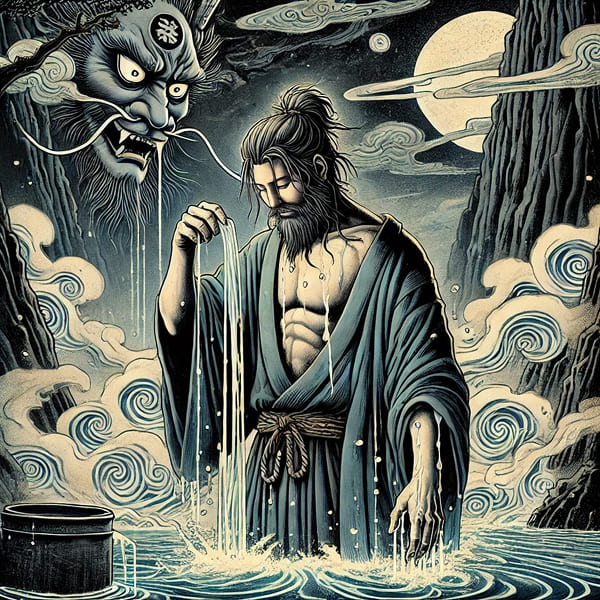Izanagi's Purification: The Mythical Origins of Misogi in Japanese Mythology

Contents
Before the sun and moon lit the skies of Japan, before the sacred shrines and divine emperors, there was a pair of gods who shaped the very foundation of the world.
This is the origin story of Japan — a tale of creation and love, of death and descent, and of spiritual rebirth. At its heart stand Izanagi and Izanami, the primordial deities who gave form to the islands of Japan and gave rise to the gods themselves.
Step into the ancient myth where life is born from sorrow, the boundary between life and death is drawn, and the first act of spiritual purification forever changes the course of divine history.
The Divine Creation of Japan
In the dawn of the universe, when heaven and earth were newly separated, the divine siblings and married deities Izanagi and Izanami were entrusted with a sacred mission — to create the land of Japan. Together, they gave birth to the islands of Japan and countless kami (gods and spirits), laying the foundation for the world as we know it.
But creation came with sorrow. When Izanami delivered the fire god Kagutsuchi, the flames fatally burned her, causing immense grief to Izanagi, who could not bear her loss. Desperate to see his beloved once more, he resolved to journey into the realm of the dead.
Journey to Yomi: The Underworld Encounter
Izanagi descended into Yomi, the dark land of the dead in Japanese mythology, in search of Izanami. In the shadows, he pleaded with her to return:
"My beloved, come back with me to the world of the living."
Bound to Yomi by the food she had eaten, Izanami sorrowfully replied that she could not return — at least not immediately. She promised to consult the underworld gods, but only if Izanagi agreed not to look at her.
Tormented by longing, Izanagi broke this promise. Lighting a torch, he saw that Izanami’s body had decayed into a grotesque form, far from the beauty he once knew. Horrified, he fled in terror.
The Separation of Life and Death
Furious at being seen in such a state, Izanami sent demonic spirits and thunder gods to chase after him. Izanagi barely escaped and sealed the entrance to the underworld — Yomotsu Hirasaka — with a giant boulder.
This act symbolized the irrevocable divide between the world of the living and the dead, a theme echoed throughout Japanese folklore.
The First Misogi: Ritual Purification by Water
Having been defiled by the realm of death, Izanagi sought spiritual purification. At the river Awagihara in Tsukushi, he performed the first-ever misogi — a sacred Shinto purification ritual involving water.
As Izanagi washed his body, powerful deities were born from his cleansing:
- From his left eye came Amaterasu, goddess of the sun
- From his right eye emerged Tsukuyomi, god of the moon
- From his nose came forth Susanoo, god of storms and the sea
These three children, known as the Three Noble Offspring, became central figures in Japanese mythology and Shinto belief.
The Legacy of Misogi: Cleansing, Rebirth, and Spiritual Order
Izanagi’s purification wasn’t just an act of physical cleansing — it was a spiritual rebirth. From death and impurity arose new life, order, and divine power. This tale gave birth to the Shinto concepts of misogi (water purification) and harae (spiritual purification), both of which continue to play a vital role in Japanese religious practices today.
The story of Izanagi teaches that even after encountering death, darkness, and despair, one can return to the light through purification, renewal, and the restoration of spiritual harmony.